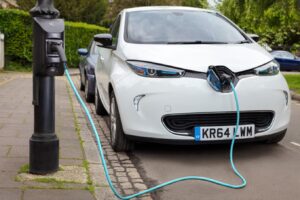Zap-Map, the UK’s leading EV mapping service, is delighted to announce that char.gy is the latest charge point operator to join Zap-Pay.
The two companies, having recently signed the agreement, are beginning work on the technical integration to set up char.gy as a fully-fledged Zap-Pay partner. char.gy will become the third charge point operator to be added to Zap-Pay. The London-based company, which will operate just under 1,000 charge points by the end of July, the majority in and around London and Coventry, was formed to solve the problem of where to charge an electric vehicle for those in the UK without off-street parking.
To date, char.gy has focused on manufacturing simple-to-use charge points for local authorities in England. The company is now in a strong position to further expand in both the public and private sectors. It is currently the seventh largest charging network in the UK.
Get our FREE ‘GUIDE TO THE BEST EVs’ e-mailed directly to your inbox
Launched last year with a mission to sign up all the key charge point networks across the UK, Zap-Pay is the simple way to pay for EV charging across networks from within the Zap-Map app. As a single-app payment system that uses a credit or debit card to pay for charging, Zap-Pay avoids the hassle of using different payment methods across all the various networks. With char.gy’s on-street coverage soon to become Zap-Pay enabled, today’s announcement marks an important step towards convenient, trouble-free charging on the streets of London and Coventry.

Alex Earl, Commercial Director at Zap-Map, said, “We’re thrilled to be working with char.gy, whose well designed charging solutions for councils and parking providers are helping to accelerate the uptake of electric vehicles, particularly for those without off-street parking.
“char.gy’s easy-to-use ethos chimes perfectly with Zap-Map’s mission to make charging simple and having them on board is great news for EV drivers, who will benefit from a convenient and easy-to-use service.
“As electric vehicles become mainstream, we need to make paying for charging as simple as possible, so we’re excited to be adding more networks to Zap-Pay over the course of the year.”
Richard Stobart, CEO and founder of char.gy, commented, “We want to make the use of electric vehicles as easy as possible for all EV drivers, so I am really excited about this integration with Zap-Pay. Our customers will now have the choice to make payment in a way that is most convenient to them.”
Zap-Map and char.gy look forward to making further announcements on the partnership once the technical integration is complete.
About Zap-Map
Launched in June 2014, with a mission to accelerate the shift to electric vehicles (EV) and help the drive towards zero carbon mobility, Zap-Map is the UK’s leading EV mapping service. The charging point map, available on desktop and iOS/Android apps, helps EV drivers to search for available charge points, plan longer journeys, pay for charging on participating networks and share updates with other drivers.
Zap-Map currently has 200,000 registered users, and over 95% of the UK’s public points on its network. Over 75% of the UK EV drivers have downloaded Zap–Map, which has grown 60% since 2020, in line with the electric vehicle market.
About char.gy
char.gy was formed in 2016, based in London, with a focus on solving the problem of where to charge an electric vehicle for the 40% of the UK population that do not have off-street parking. To date the company’s focus has been on building a software platform, manufacturing charge points, and selling these charge points to Local Authorities in England.
char.gy has nearly 1000 charge points on the streets, the majority in London and Coventry, and is in a strong position to further expand in both the public and private sectors. The business model to date has depended predominantly on the Local Authorities obtaining funding from OZEV to fund 75% of the capital costs of the charge points. char.gy then operates the charge points, collecting the revenue, paying for the ongoing operations and maintenance, the electricity consumed, and pays the local authority a small share of the revenue.










